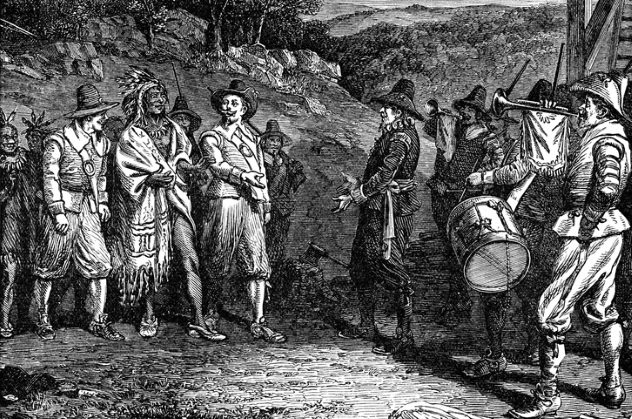


One infamous example took place on the banks of the Mystic River during an event known as the Pequot War of 1637, a conflict that might better be named the Anglo-Pequot War. They severed the hands of two Hopis with the idea that they would become walking advertisements for what happens to those who resisted colonization. The Spanish soldiers, under orders from their commander, chopped off the right foot of every man over age 25 and enslaved men and women alike. After three days of brutal warfare, hundreds of Pueblos lay dead. After the town’s residents killed a dozen Spaniards, a larger contingent of soldiers invaded the town, which had been occupied since the 12th century. In 1598, the Pueblo residents of Acoma, in modern New Mexico, rebelled against Spanish attempts to coerce them into becoming subjects of a distant monarch. The hostile nature of European relations with Indigenous peoples in North America began even before 1607, the year the English established a community in Jamestown. In a similar vein, we might ask: how does our understanding of early American history look if we put conflicts between Indigenous and newcomers at the center of the story? While it might be comforting to think that there were times when Indigenous Americans and European colonists coexisted in peace, violence was common, not exceptional, in the territory that would eventually become the U.S. The 1619 Project of the New York Times has shone a light on the harrowing truths of enslavement and its legacy. By emphasizing peaceful coexistence between newly arrived English migrants and already settled Wampanoags, annual celebrations of Thanksgiving have, perhaps unintentionally, minimized the violence inherent in colonization. In 1984, Ronald Reagan even quoted a Seneca saying to demonstrate that “the native American Thanksgiving antedated those of the new Americans.”īut the focus on 1621 distorts our understanding of the past. By the end of that century, they remembered to call attention to the presence of Native peoples, too. Presidents routinely reminded the nation about the hard work of the Pilgrims. (The next year his proclamation, which also ignored the colonists, took note of divine assistance in “many and signal victories over the enemy, who is of our own household,” a reference to the Civil War.) By the mid-20th century, U. In 1863, President Abraham Lincoln declared the last Thursday of November as a national holiday of Thanksgiving, though his proclamation mentioned neither the Pilgrims nor the Wampanoags. In the 19th century, that feast became the focal point for celebration even though Pilgrims, according to William Bradford, their governor and primary historian, seem to have actually declared their first day of thanksgiving in 1623-two years later-when mid-summer rains soaked drought-parched fields. But each only makes sense when seen in the context of a century that defined enduring aspects of American life, especially European colonists’ efforts to take possession of Indigenous lands.Īccording to American lore, a group of Wampanoags joined the struggling community of English colonists for a meal in the autumn of 1621.

These events have drawn extraordinary public attention. This year marks 400 years since English Pilgrims and Wampanoags allegedly sat down to a three-day feast in territory the immigrants called Plymouth. In 2019, the world observed the 400th anniversary of the arrival of the first enslaved Africans in Virginia.


 0 kommentar(er)
0 kommentar(er)
